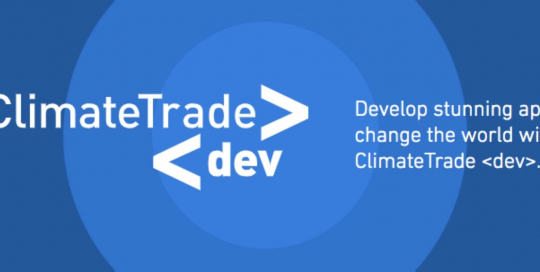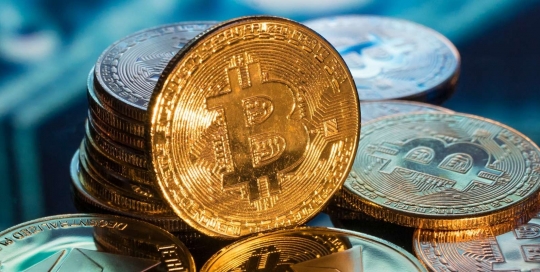Non-fungible tokens (NFTs) are the latest blockchain craze. But do you know what they are?
We live in an era in which emerging technologies never stop introducing new terms to our vocabulary as they reshape our society.
While some of them are too specialized to be discussed in the mainstream, there is one technology whose vocabulary is as likely to be heard in a business meeting as in a bar conversation. We are talking, of course, about blockchain.
Today we will be analyzing the latest blockchain craze: fungible and non-fungible tokens (also known as NFTs). But first, let’s start with a very simple but effective explanation of blockchain.
What makes blockchain so popular is that it allows people to hold digital assets that are impossible to counterfeit or duplicate, without a single entity controlling the system. On the internet, a photo or any other file can be duplicated any number of times and sent to different recipients who would never know how many duplicates of that photo existed and who had them. This is why it has been impossible so far to transfer value through Internet networks; and why it has continued to use legacy financial railways.
But once you have a technology that allows digital assets to bear the same characteristics as money (durability, transportability, fungibility, scarceness, convenience, counterfeit resistance, etc….), it opens the way for value (not just money) to be transferred directly over the Internet, without any need for legacy infrastructure.
This brings us back to the topic of this article, tokens. Tokens have been everywhere in different forms for a long time (think casino chips or tickets to attractions), and digital tokens are not that different. Specifically, they can be seen as accounting systems that serve a specific use within a certain context. Multiple features can be built upon tokens’ accounting capability to serve different use cases, from holding reputation to voting rights, or access to a concrete service or platform.
Now, let’s focus on the difference between fungible and non-fungible tokens by understanding the word “fungible”. According to the Merriam Webster Dictionary, fungibility means:
1. Being something (such as money or a commodity) of such a nature that one part or quantity may be replaced by another equal part or quantity in paying a debt or settling an account
Oil, wheat, and lumber are fungible commodities.
fungible goods
2. Capable of mutual substitution: Interchangable
… the court’s postulate that male and female jurors must be regarded as fungible
— George Will
3. Readily changeable to adapt to new situations: Flexible
Managers typically use more than a hundred different lineups over the course of the season. Batting orders are so fungible that few players last long in one spot.
— Tom Verducci
Let’s use a simple example to illustrate the difference: if I have a cinema ticket and I can’t go, another person can use the ticket in the same way I would have used it – cinema tickets are interchangeable. But if we are talking about a plane ticket, only the original passenger can use it – a plane ticket is unique and not interchangeable. I can exchange my cinema ticket to see a different movie: cinema tickets are fungible tokens. But I can’t exchange my plane ticket to fly somewhere different: plane tickets are non-fungible tokens.
Money is fungible: I can easily exchange a US$100 bill for another, but if I try to exchange a piece or art for another, things get tricky: art is non-fungible.
Let’s take the analogy to the digital field. If I have 1 bitcoin, I can easily exchange it for another bitcoin without any loss of value, but if I own a piece of digital art, it is not necessarily meant to be exchangeable for another piece of digital art. This takes us to one of the most common use cases for non-fungible tokens: the representation of ownership for digital artwork.
What makes tokens non-fungible is that they have unique attributes (or meta-data) linked to them, and those make them different and irreplaceable (in the case of the plane ticket, the key attribute would be the name of the passenger). For digital artwork, the link/location where the piece of art is stored, and the author who uploaded it (created the NFT) can be traced back to prove authorship.
Art and collectibles are two of the more simple and expanded use cases for NFTs, but the ability to have digital assets which can contain metadata opens up the field for a plethora of other applications, among which:
- Gaming: This is another hot area for NFTs: you can represent avatars, weapons, or capabilities in the form of NFTs that can be traded within a game.
- Finance: You can have bonds in the form of an NFT whose holder receives the yields of the bond in the same address that holds the NFT.
- Tickets and certificates: They can be represented as NFTs to authenticate and preserve their ownership and exercise the rights derived from it.
- Luxury fashion: NFTs are increasingly being used to fight counterfeiting in the luxury fashion industry by attaching a Non Fungible Token issued by the luxury brand to any item (such as a pair of shoes).
- Content creation: Ashton Kutcher and Mila Kunis recently launched an animation series, Stoner Cats, which only the holders of an NFT representing one of the characters were able to watch.
Climate change and NFTs

On the one hand, NFTs have an enormous CO2 emissions impact because of the energy-intensive process of creating them in the blockchain where most of them are created and traded, Ethereum.
As of April 2021, the creation and trading of NFTs on Ethereum has caused an estimated footprint of nearly 150,000 tons of CO2, the equivalent of 70,000 roundtrip flights from New York to London. Some NFT platforms, such as Aorist, are built on blockchain networks that do not rely on massive energy consumption, like Algorand. But the reality nowadays is that most of the NFTs created and traded come with a very high environmental cost.
We are proud to be contributing to making the blockchain and NFT space more sustainable by partnering up with Algorand, Aorist, and Cudos Network, to name a few, to achieve negative-emissions NFTs, and to mitigate the environmental cost of blockchain’s promise through our API and footprint calculators.
On the other hand, NFTs can also be used to fight climate change in different ways, for example, an NFT could have attached a certain amount of carbon offsets with an artwork which makes the offsetting of emissions more appealing: an example of this use case is this NFT minted with the offset of 1,000 tons of CO2.
Going back to our previous use case around tickets and certificates, we can also envisage carbon credit certificates represented as non-fungible tokens that contain a serial number registration and all the relevant information as metadata. Because of that, we at ClimateTrade are convinced that in the near future, NFTs will have a prominent space in climate action and carbon markets.







